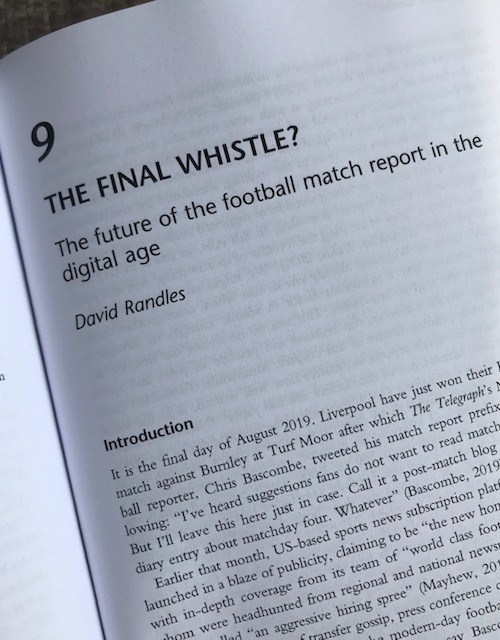
In his most famous work, The Origin of Species, Charles Darwin argues that those able to adapt best to their changing environment have the best chance of surviving, while those who do not adapt do not make it.
Adapt or die.
Not that Darwin coined the term; it would be attributed to his theory some decades later, and has since been used in line with technological developments that challenge (and threaten) convention in everything it seems from business to politics to education, and all things in between.
In a quantum leap from the evolution of man to the rapidly changing media and communications industries, we can see the proposed restructure of Reach PLC, the UK’s largest regional news publisher, in terms of Boulton and Pratt’s thoughts that digital transformation can be interpreted as a revision of how organizations use technology, people and processes such as workflow to fundamentally change business performance.
According to Boulton and Pratt this might be prompted by the pursuit of new revenue streams to meet changing customer expectations around products and services that may have come about from increased competition in the marketplace.
These factors are all present in the announcement by Reach PLC in late 2023, described by Hold The Front Page as “a huge redundancy programme with 450 jobs across the business set to go, including 320 editorial roles.”
While the details of what all of this will mean for news and sports journalism outputs are vague at best, it seems clear from reading between the lines of statements released by Reach’s senior management that the focus will now be on trying to appeal to and maintain new, digital audiences. This, of course, will mean producing and delivering content across digital platforms that, in terms of the company’s football coverage, aligns with the main premise of my PhD research – The Digital Transformation of Football Coverage.
Announcing major changes “to the way we operate, the way we’re structured, and the way we’re meeting the challenges facing our industry”, Reach PLC chief executive Jim Mullen added that while the changes were designed to reduce costs “against the backdrop of continuing pressures on the business from the economic environment we’re operating in,” there is also recognition that Reach PLC is “in a fight to get our journalism in front of as many people as possible.”
Said Mullen: “The changes will help sustain our print products while enabling us to pursue a greater digital audience.
“The world of news production and consumption continues to change. As customers’ habits evolve rapidly, so must we, to make sure our brands and our content remain influential and impactful.”
Reflecting on Reach PLC’s shift to a digital first strategy over the past decade, a period in which Mullen says the company has become a “leading digital publisher”, he mentions how the business and its cost base must now be organised to deliver against the challenges of “the fast-changing landscape we operate in.”
Added Mullen: “Our industry has a history of change and the future will undoubtedly involve yet more. That’s why it’s essential we set ourselves up to win, by making our operations suited to an increasingly fast-paced, competitive and customer-focused digital world.”
Of course, to the many staff whose jobs are on the line, this is long hand for redundancies. Rationalising, streamlining, being market efficient. It’s all management speak for large scale job losses; in this case around an eighth of Reach’s entire editorial workforce and the third round of cuts announced in 2023 following the loss of 102 jobs in January and a further 192 roles in March.
Reach bosses have pointed to a fall in digital advertising revenues, in part as a consequence of changes to algorithms on content hosting platforms, namely Google and Facebook that, after previously accounting for significant levels of referral traffic to news websites, have now downgraded news content.
In a message to staff, Reach PLC chief digital publisher David Higgerson described the current climate for commercial news publishers as “the most challenging period” since he joined the news business in 1997.
Highlighting specifically how “referrers like Facebook and Google are opting to keep readers on their platforms rather than sending them on to publishers,” and that “newer platforms like TikTok have no mechanism to send audiences to websites at all,” Higgerson also cites the BBC’s “ramp-up of its online journalism operations” as another key factor that has made the market for digital news and sport content more competitive.
A BBC spokesperson has defended the corporation’s decision to step up its local digital news service amid widespread criticism from provincial news publishers.
“The scale of their impact,” said Higgerson, “paired with continued audience behaviour change, mean we need to fundamentally change what we do and the way we do it, to build a growing and secure audience for the future.”
Importantly here, stating that the business needs to move to “a more audience-led model in all of our newsrooms” Higgerson says Reach PLC has “redefined what sports journalism means in the digital age.”
And yet, since the latest announcment in November, a number of senior sports journalists have departed the company.
Pledging to continue to innovate with new ways of producing and delivering news content, Higgerson says the company will also stop doing certain things, “things that have been important in the past but that no longer serve our audience or future goals.”
Time will tell what this means exactly, and whether there will be an impact on some storytelling methods that are no longer deemed popular enough for digital audiences. Coming to mind here is my research exploring the future of the football match report in the digital age.
Take-away’s from Reach PLC’s restructure outlined by Higgerson are:
- Making every single newsroom future audience-led. Putting digital audiences of the future at the heart of our operation. This will become the norm, with our entire editorial operation focusing on building new, online, audience relationships. In practical terms, this will mean changes to working weeks and patterns in some areas.
- Bringing all digital and print content teams together (as the majority of them already are).
- Making all our content centred on user needs – we’ll be using our deep audience understanding to drive meaningful engagement and create content that resonates with all our audiences, cross-platform. This will involve adopting new ways of understanding data, and identifying new topics that make a difference to the lives of our audience. It will also mean we have to stop doing some things that don’t resonate with readers any more.
- Improving search – enabling us to be seen more often so we can build new, sustainable audience relationships.
- Driving audiovisual excellence – by creating a combined Editorial and Commercial creative, production and video centre of excellence.
Concluded Higgerson: “In the long term we need to – and will – win more eyes and more engagement; give audiences the content they want in the format they want it; and make sure our journalism gets the attention it deserves.”
In summary, what we have here is the ongoing digital transformation of Reach PLC in line with Boulton and Pratt’s key components of how technology, people and processes are used to change business performance in the pursuit of new revenue streams to meet changing customer expectations around products and services that may have come about from increased competition in the marketplace.
As following new technological trends and embracing digital transformation is essential for businesses to remain competitive and stay ahead of the curve, by keeping up with customer expectations and undergoing digital transformation in this way, businesses can better position themselves for success in today’s digital world.
And yet, as alluded to by Higgerson’s point and aligning to thoughts elsewhere about continuity and discontinuity in sports journalism (Bradshaw & Minogue, 2020; Randles, 2022) it is significant that Astapciks (2023) asserts the most effective digital transformation is experienced by those businesses that can successfully introduce new technologies while maintaining the best traditions of the “old business view.”
This logic is apparent with many of my own observations and case study analysis undertaken for PhD research, in that the development of storytelling in sport has evolved from some traditional analogue linear formats to emergent digital non-linear formats. Being aware of and able to embrace the most appropriate methods to produce narratives for the most suitable platforms to deliver to audience where they want it will be key to the success or otherwise of Reach’s transformation. A digital transformation for an increasingly digital audience.
*Main image via geralt, CC0, via Wikimedia Commons
